Procedural and Substantive Democracy in India (September 07, 2018)
By Dr. Dhananjay Kumar
Introduction
Political scientists differentiate many types of democracies: representative, deliberative, participative, procedural, and substantive. This seminar took up the procedural and substantive types for deliberation: one related to the institutional, minimal, electoral democracy, and second, to the substantive or effective democracy. The former is viewed in terms of institutions of democracy, political parties and other associations or organizations, periodic elections, universal adult franchise, leadership, etc. It is rarely concerned with what happens beyond elections in the social space. Alternatively, substantive democracy is viewed in the light of its diffusions in various sectors of society, redistributive justice, human capabilities and entitlements (education, health, infrastructure, etc), social capital, associated factors of trust, values, and norms, civil society, human rights, and governance. However, in the Indian context, both types of democracy are complementary and interdependent. The successful functioning of the procedural dimension of democracy requires substantive democracy also.
Lighting of Lamp
The seminar commenced with the lighting of the lamp by dignitaries, namely, Professors Suhas Palshikar, Sanjay Kumar, Priyavadan Patel, Denzil Fernandes, Lajwanti Chatani and Lancy Lobo. After this formal inauguration, Prof. Lobo welcomed the participants and briefly introduced them to the activities of the CCD. He mainly brought forth research carried out by the Centre on caste, religion, tribe, communalism, elections, environment, health and suicide. This was followed by a round of self-introductions by the participants.
Inaugural Session
Prof. Lobo discussed the three main reasons for choosing the theme of this seminar. First, how a paradigm shift has been taking place in the idea of India in recent times from Nehru to Modi. Second, CCD has done a longitudinal micro study of election. Third, we observe an increasing gap between electoral promises, an integral part of procedural democracy on the one hand and the well-being of people at ground realities in the substantive aspect of democracy on the other hand.
Prof. Lobo opined that constitutional democracy cannot be limited to electoral politics alone. It must be substantive democracy as well. It must protect civil liberties and democratic rights; enable political participation and promote economic empowerment; guarantee cultural rights to communities and fundamental freedoms to all citizens. There is an inevitable dilemma between procedural and constitutional democracy. Both must be integrated into a functional democracy and not lapse into a dysfunctional one.
Session I
The first session was chaired by Prof. Suhas Palshikar and the speaker was Prof. Sanjay Kumar. Prof. Kumar in his paper, ‘Procedural Democracy: Hits and Misses in India,’ presented an outline of procedural democracy in India in terms of its achievements and failures. He narrated how a simple idea of democracy as the right individuals to elect their own representatives evolved into a more complex institution over time. Still, over time, voting behaviour and patterns have remained the core of democracy, although substantive democracy is was also imperative for the smooth functioning of democracy.
From an extensive study based on a large sample survey with tables and graphs, he first highlighted the hits, i.e., achievements, of the procedural democracy in India during the last seven decades. He examined the strengthening of procedural democracy on five parameters, namely, political equality, the effectiveness of institutions, the occurrence of free and fair elections, constitutional government, and increase in voter turnouts. He was of the view that, in spite of past prevalent social inequities, procedural democracy has provided equal political participation, reduced the gender gap, and increased representation. Further, institutionally, it has created its strong base. In the long years of democracy, the country has never back-tracked in its promise of equal citizenship to all, a promise that continues to hold evocative sway over millions, and smooth shifting of power after the election.
Prof. Kumar highlighted that procedural democracy has not been entirely a rosy picture but has some misses, or, failures too. Some of the challenges are: the unequal representation of gender and minorities in political candidature, criminalization of politics, and accountability of political parties. Further, he highlighted a few limitations in each of his five parameters of the realization of their full potentials.
The social disparity in the country presented the main challenge for the potential of electoral democracy. The challenges were manifested in the forms of biases that creep in, thus diluting the constitutional guarantee to each citizen. However, he argued that because of these challenges and limitations, substantive and procedural democracy get strengthened in some way. Overall his paper provided a basic understanding of what procedural democracy stands for in the country.
Session II
In the second session, chaired by Prof. Priyavadan Patel, Prof. Suhas Palshikar, in his paper, ‘India’s Search for Substantive Democracy: Framework for Evaluation’, argued that one has to look beyond the binary distinction of procedural and substantive. In his opinion, both dimensions of democracy are equally important and, in fact, are interdependent and have symbiotic relationship.
He described the general issue of democracy and the context in which assessment of democracy has to take place. In the discussion on Indian democracy, procedural and substantive distinction was common, but later ‘governance’ was also added to it. However, in popular perception, democracy was understood as a system that ensures some form of equality and better living. The idea of substantive democracy has a rich and long legacy. The idea of the well-being of citizens is based mainly on three premises: Gandhian philosophy of daridranarayan, Nehruvian mild Marxist socialism, and Ambedkarite individual liberalism, beyond the French Revolution ideology.
In this backdrop he asked two questions: (1) can procedural democracy be really separated from substantive democracy, and (2) what are the ways to conceptualize substantive democracy? He looked into the seven decades journey of Indian Democracy in four phases: first is the early post-independence period; second is the apparent upsurge of the nineties (expansion by lacking in delivery); third is the present moment marked by redefinition, and the fourth is the future, especially the next couple of decades.
Prof. Palshikar proposed some test of substantive democracy and discussed it in the Indian context. He argued that procedural democracy, when widely accepted, adopted, and practiced, becomes an instrument of democratization. In representative politics, like ours, a symbiotic relationship between democratic politics and social equality is essential. Democracy in principle must include all citizens and allow the unfolding of diversity, though politics tends to homogenize population.
In the concluding observation, Prof. Palshikar argued that we should look at the larger picture of democracy, and opined that Indian democracy is a ‘work in progress’, an ideal that is an ever-expanding goal for democratization. He cautioned that the balance of well-being and inclusion hinges on the unity of procedure and substance.
He further argued that, while the challenge of well-being is indeed a long-standing one and inadequately addressed, the challenge of choosing between majoritarian and pluralist modes of politics will define the quality and tenacity of India’s democracy in the near future. He concluded that unless the centrality of this challenge is kept in mind and substantive democracy is appreciated, the assessment of India’s democracy and prognoses of its future is likely to remain deeply flawed.
Session III
This session was chaired by Prof. Sanjay Kumar. Dr. Jayesh Shah and Prof. Lancy Lobo presented their paper, ‘How People Vote: Exploring Civic Literacy and Political Participation’. The paper is based on empirical research carried out by CCD on the changing dimensions of electoral politics and the voting behaviour. It is a longitudinal study of elections from 2010 to 2016 in rural, semi-urban and urban Vadodara, Gujarat, involving mainly three parts: (1) booth level voting pattern analysis; (2) ethnography of elections; and (3) civic literacy and political participation in the elections.
Dr. Jayesh Shah provided an understanding of elections by studying voters of the rural, semi-urban and urban areas in local, assembly and parliament elections. As a result, he highlighted the pattern of voting behaviour at these three levels. He also presented observations about what people said and what people actually did at ground level in voting behaviour.
The study covered how people vote, considering three aspects: voting for recognition; voting under peer pressure; and voting as a right or voting as a duty. Dr. Shah also explained the relationship between ideology, religion and politics; this was a sensitive and a challenging perspective of the study.
In the concluding observation, Dr. Shah suggested that the actual political alignments of middle classes in democracy are very complex. To understand this complexity, one has to study how it is interwoven with competition for patronage and with identity politics, party politics, and ideology.
Panel Discussion: The Way Forward
In the last session of the seminar, a panel discussion was held. Its moderator was Dr. Denzil Fernandes, and the two panelists were Prof. Suhas Palshikar and Prof. Sanjay Kumar.
Dr. Fernandes first briefly summarized the extensive discussion on procedural and substantive dimensions of democracy held in the earlier sessions. Afterwards, he opened the forum by taking questions, comments, suggestions and ideas from the participants.
There were a wide variety of comments: from failures of the substantive democracy to limited achievement of procedural democracy. Also, there were a variety of questions raised: where are the rights of subaltern, minorities, dalits and tribals? What are the environmental and legal aspects of both forms of democracy? How can we further discuss deepening of Indian democracy? If the expansive part of democracy is somewhat achieved, why is deepening of democracy still very shallow? What changes are seen in society and culture with the change of the present regime? How political parties have achieved skill and booth management during the elections and what is the future trajectory?
The moderator allowed the panelists to respond to the audience. First, Prof. Sanjay Kumar responded. He said that challenges to procedural democracy are immensely diversified. But we cannot assume that nothing is happening. Some kind of churning is going on. Earlier, we used to see only dalits and tribals asserting their demands through mobilization but these days upper castes are coming on the road. He gave an analogy to this situation in which the pressured water flows through one tube with one hole. If this hole is suppressed to stop the water, another hole would emerge in some other place.
It is true that the expansion of procedural democracy has reached the last corner of the country. But it also has its shortcomings. As to why inspite of heavy mobilization and assertion of backward classes/castes in the electoral system by 1990, no welfare and well-being are achieved? He analyzed that the result was not encouraging and it had a long way to travel for procedural democracy to achieve substantive democracy.
Subsequently, the second panelist, Prof Suhas Palshikar opined that being too critical with a democratic system will not achieve any constructive outcome. We should look into it in a holistic manner. We cannot get rid of the democratic system at all, as it is bound to be there. We need to fight within the potential of the democratic system only. For this, he gave three propositions.
First, there is the need to inculcate a democratic culture. Democracy is not just about numbers. Of course, to form a government, the arithmetic dimension is essential. But democracy is beyond the numbers.
Second, we should not assume that democracy is a heaven, and through it all the problems will be magically solved. It is an indirect process through representatives of people. It emerged from the people/society and works according to the fashion/or currents in society. Our representative comes from within us. They also share the same shortcomings which our society has.
Third, it is assumed that democracy is high jacked currently by mobocracy and oligocracy. This thing has not emerged on its own and only at the present moment. It has its germination from within the society from 2014 or the last one decade.
In the end, we have to see democracy as ‘work-in-progress’ with a large canvass. We always have the options if we have the challenges. The options we choose frame the character of democracy. The challenge of choosing between majoritarian and pluralist modes of politics will define the quality and tenacity of India’s democracy in the near future.
Questions raised by participants
Procedural Democracy
- Does the increase of women’s participation and reducing gender gap in voter turnout have any relationship with the other variables, such literacy, gender consciousness, women empowerment?
- What are the changes taking place in electoral violence in the last seven decades?
- How can we modify our research methodology to capture the changing dimension of electoral violence?
- What are the loopholes of procedural democracy and what are the reforms in legal framework needed to take care of them?
- What are the shortcomings of inclusion of religious dimension in representative democracy?
- What is the relation between procedural democracy and well-being and equality?
Legal Aspect of Substantive Democracy
- What are the legal aspects of procedural and substantive democracy?
- What happens to the constitution at ground level and in its practice?
Substantive Democracy
- What are the achievements and failures in deepening of substantive Democracy?
- How we can see past and present regimes in terms of inclusion of substantive democracy?
- How is the country at the crossroads of choosing between majoritarianism and plurality in democracy?
- What are the risks of substantive democracy?
- What are the models of substantive democracy engaged by present government?
Election and Voting Behaviour
- What are the methodological issues while researching ethnography of voting behaviour in India?
- How will we see the procedural democracy when parties equipped with booth level skills in managing to win elections?
- Has our democracy led to the individual voting as an Individual, or a person having multiple identities like religion, caste, family, kin?
- Can democracy be deepened if people get engaged in election process on larger scale?
- Do money and muscle power, derogatory campaign speeches etc. retrograde the very nature of procedural democracy, i.e. free and fair election?
Democracy and Development
- Is development discourse democratic?
- Can procedural democracy alone deliver development?


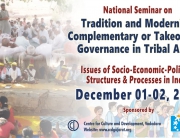
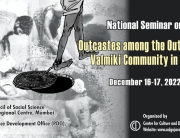
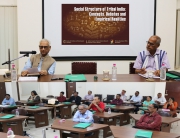
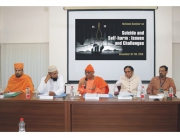
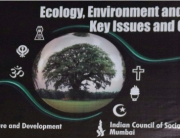
Add Comment